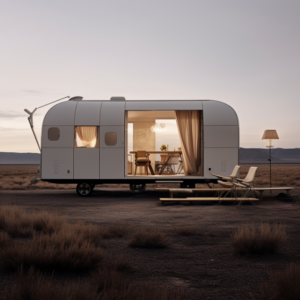In response to the ever-evolving nature of contemporary lifestyles, a new paradigm in residential architecture has emerged—homes that prioritize flexibility and adaptability. This article explores the concept of “Flexible Living Spaces,” delving into the innovative design principles, architectural strategies, and technological integrations that enable homes to seamlessly flex and adapt to the changing needs of their residents. From multifunctional interiors to responsive exteriors, these dwellings represent a dynamic approach to modern living.
1. Introduction:
The introduction sets the stage for an exploration of Flexible Living Spaces, highlighting the growing importance of adaptability in residential architecture. It outlines the significance of homes that can flexibly evolve to meet the diverse and changing needs of their inhabitants.
2. The Evolution of Contemporary Lifestyles:
This section examines the shifting landscape of contemporary lifestyles that necessitates a rethinking of traditional home design. Changes in work patterns, family structures, and recreational activities underscore the need for flexible living spaces that can accommodate these dynamic shifts.
3. Designing for Multifunctionality:
Flexible living spaces embrace multifunctionality as a core design principle. This section explores how architects and designers strategically plan interiors to serve multiple purposes. From convertible furniture to modular layouts, the article showcases innovative approaches that maximize the utility of living spaces.
4. Adaptable Architectural Elements:
Architectural elements play a crucial role in the adaptability of homes. This section delves into how flexible living spaces incorporate adaptable features such as sliding walls, movable partitions, and expandable rooms. Real-world examples illustrate how these elements facilitate a seamless transition between different functional zones within a home.
5. Technological Integrations:
Technology acts as an enabler for flexibility in modern homes. This section explores how smart home technologies, automation systems, and integrated gadgets contribute to the adaptability of living spaces. Case studies highlight homes where technology seamlessly enhances residents’ ability to customize and control their environments.
6. Outdoor Flexibility:
The concept of flexible living extends beyond interior spaces to include outdoor areas. This section explores how outdoor spaces are designed to be versatile, catering to various activities and moods. Examples showcase adaptable landscapes, convertible patios, and flexible garden spaces that complement the flexible interiors.
7. Sustainability in Flexible Design:
Flexible living spaces can align with sustainable design principles. This section explores how environmentally conscious materials, energy-efficient systems, and a focus on longevity contribute to the sustainability of adaptable homes. Case studies demonstrate how flexibility and eco-friendliness can coexist in modern residential architecture.
8. Responding to Life Transitions:
Life transitions, such as changes in family size, working arrangements, or health needs, often necessitate a reassessment of living spaces. This section explores how flexible homes can respond to life transitions, providing solutions that adapt to new circumstances without the need for major renovations.
9. Challenges and Solutions:
Creating flexible living spaces comes with challenges, including budget constraints, structural limitations, and zoning regulations. This section addresses common challenges and explores innovative solutions and best practices to overcome obstacles associated with designing adaptable homes.
10. Case Studies of Flexible Living Spaces:
A series of case studies provides a closer look at exemplary flexible living spaces from around the world. Each case study highlights the unique features, design philosophies, and resident experiences that make these homes stand out as successful examples of adaptable and flexible living.
11. Future Trends in Flexible Living:
As the demand for flexible living spaces continues to rise, this section speculates on future trends and potential developments in the field. From advancements in smart home technology to new materials that enhance flexibility, the article explores the possibilities that lie ahead for the future of adaptable residential design.
12. Conclusion:
Flexible Living Spaces represent a contemporary response to the dynamic and multifaceted nature of modern life. By embracing flexibility in design, architecture, and technology, these homes empower residents to adapt their living environments to meet changing needs and preferences. As the concept evolves, it challenges traditional notions of static homes and opens up new possibilities for a more dynamic and responsive approach to residential living.



